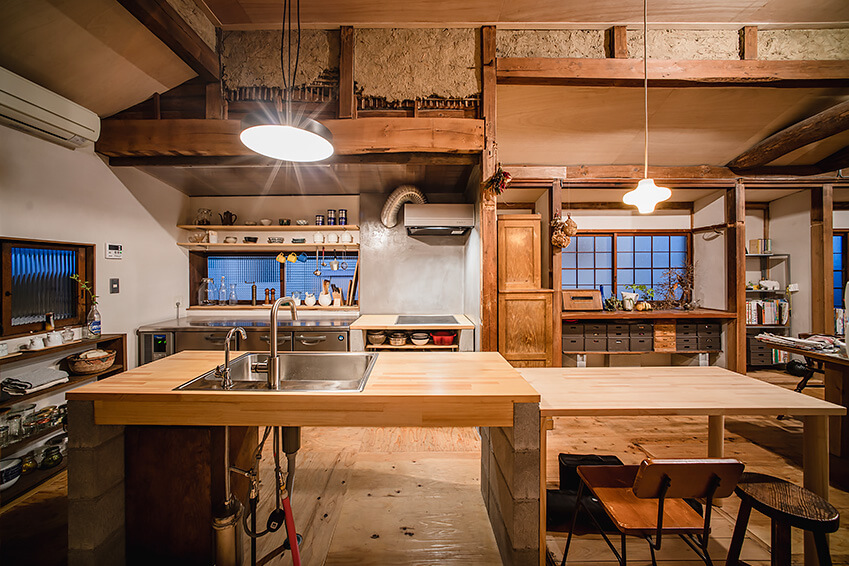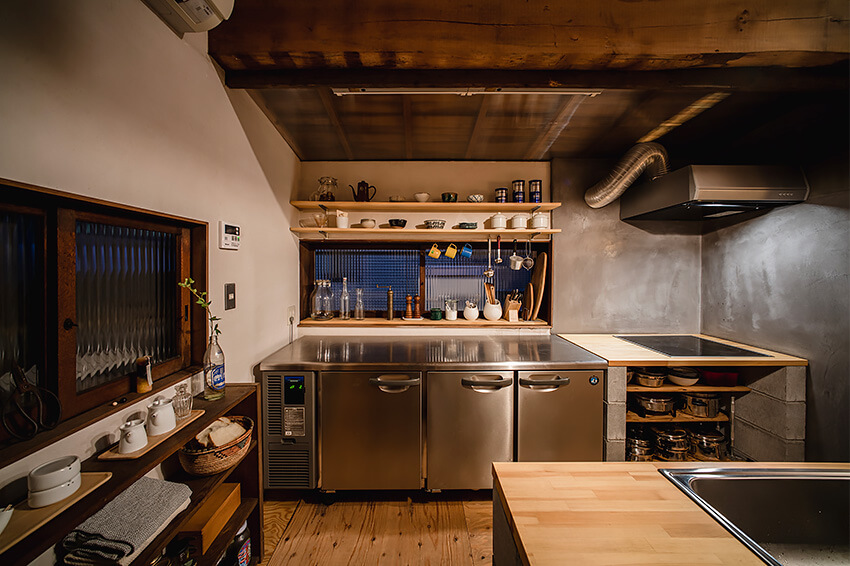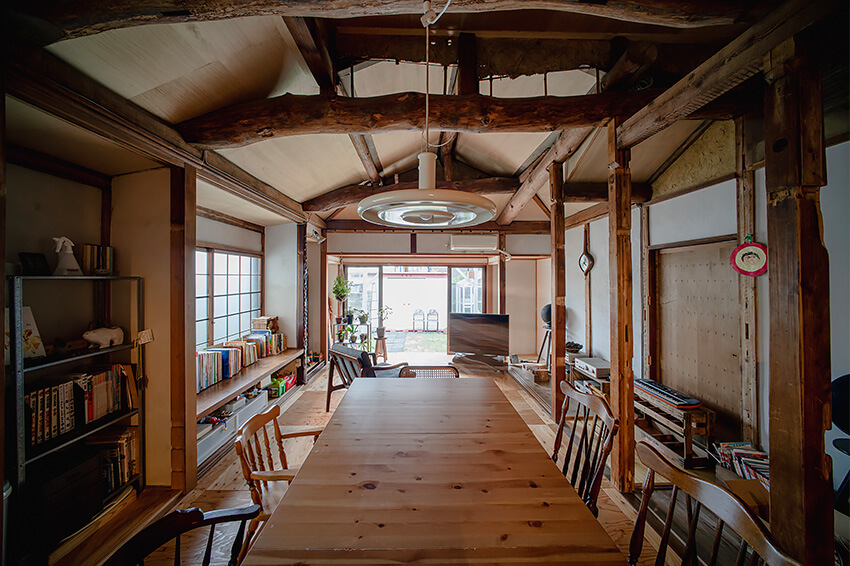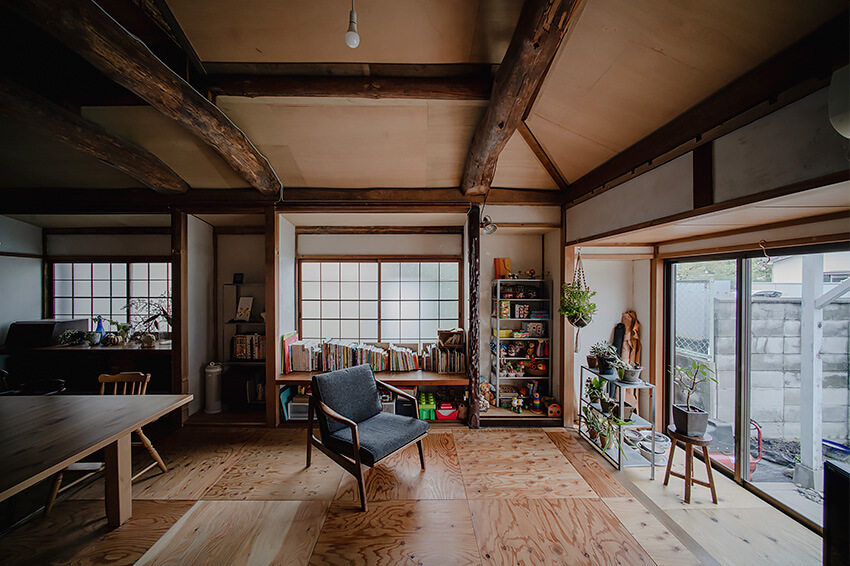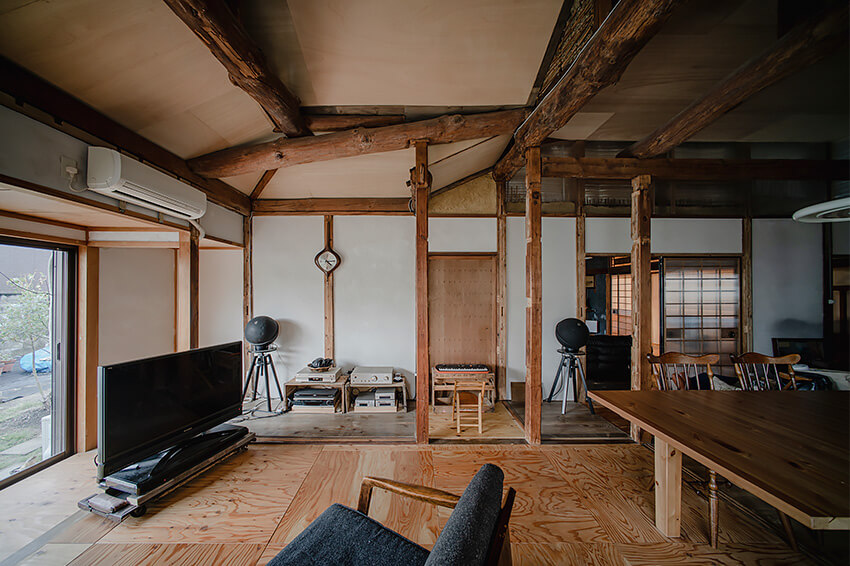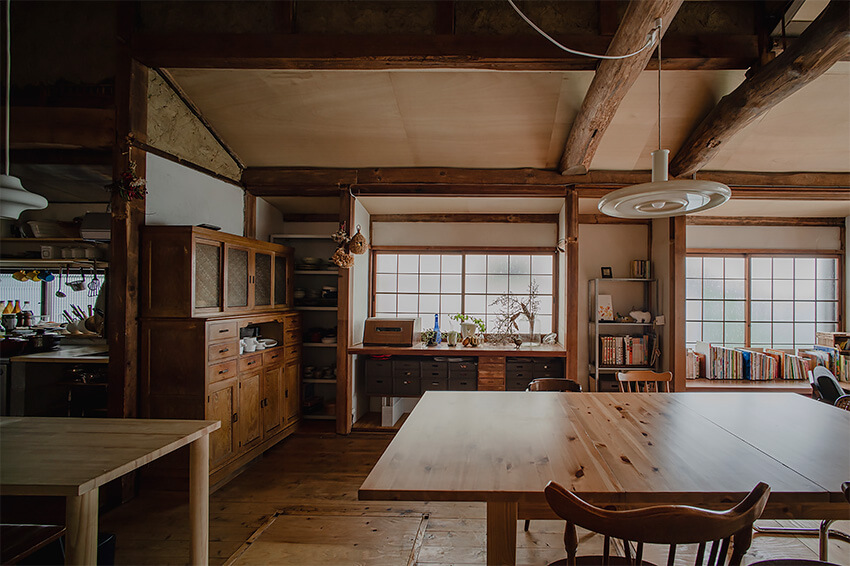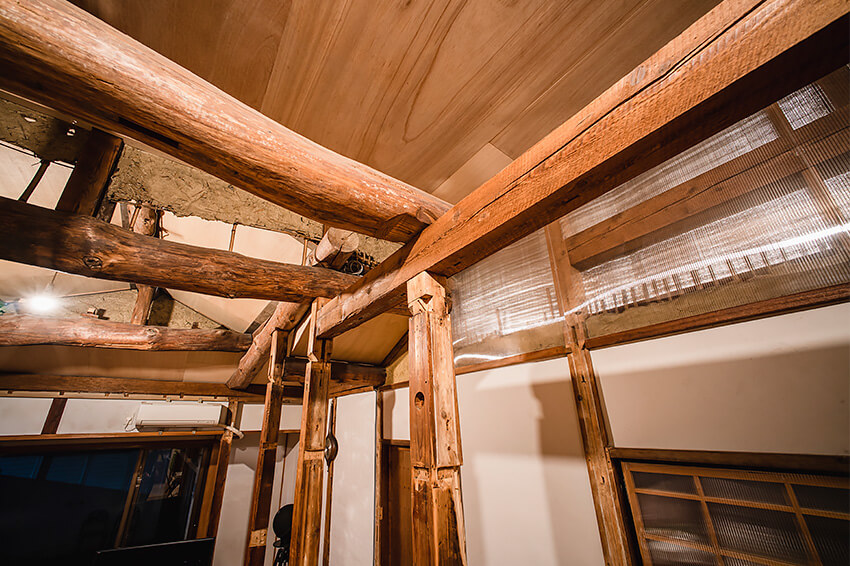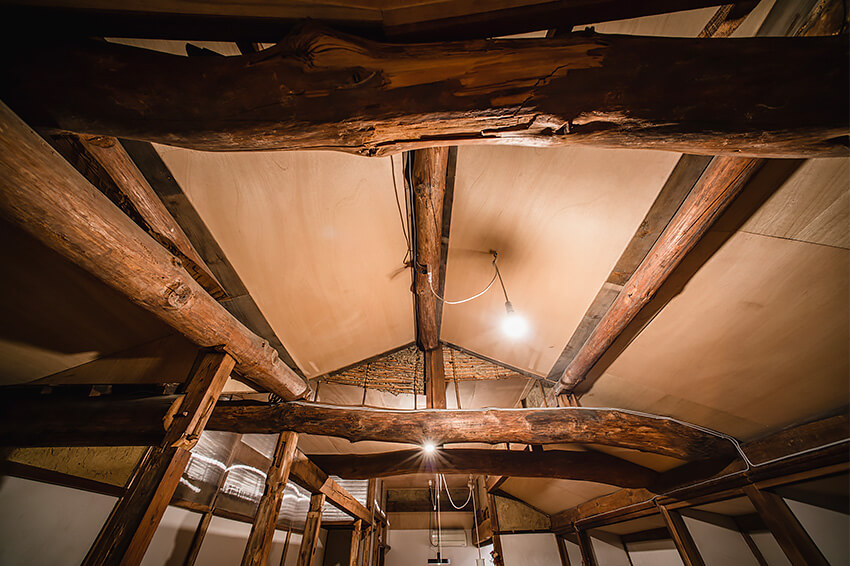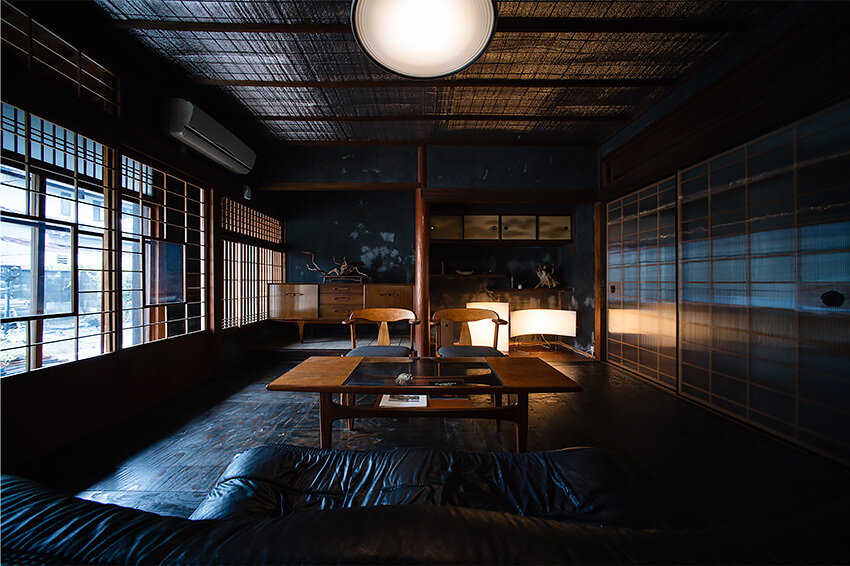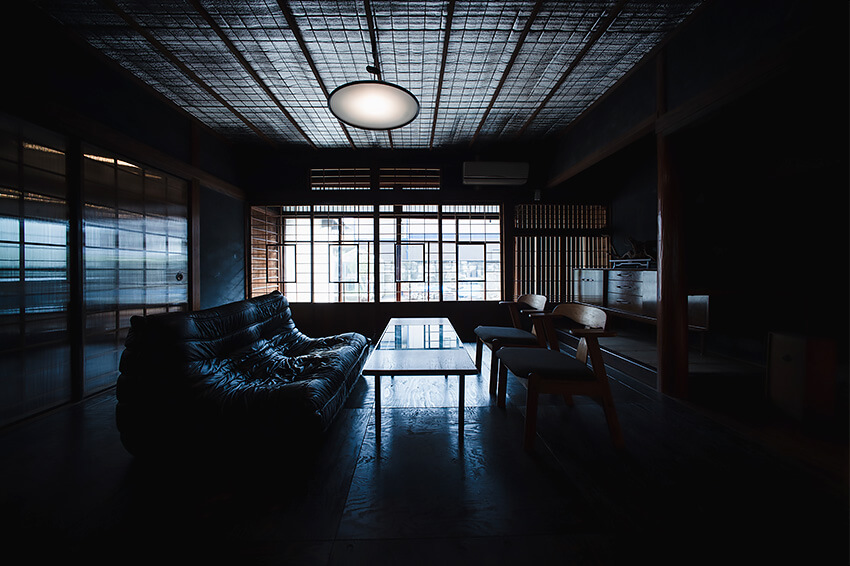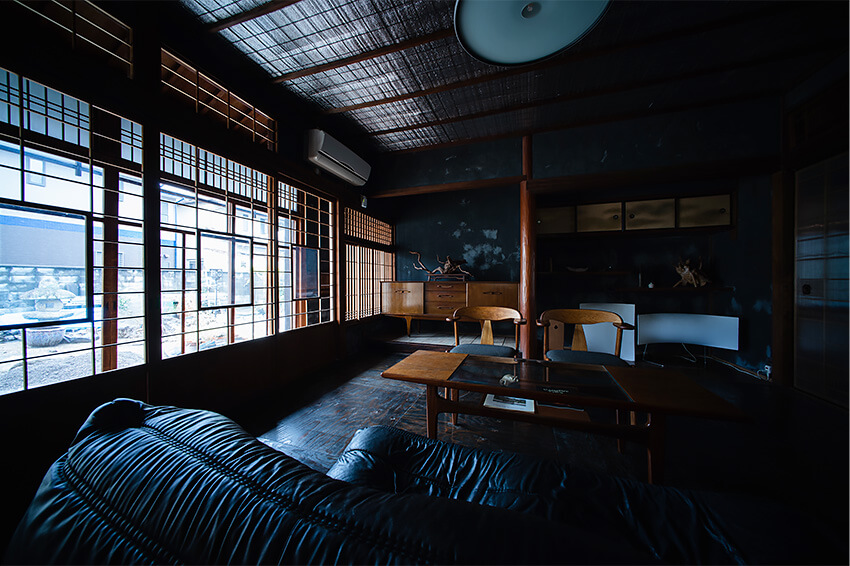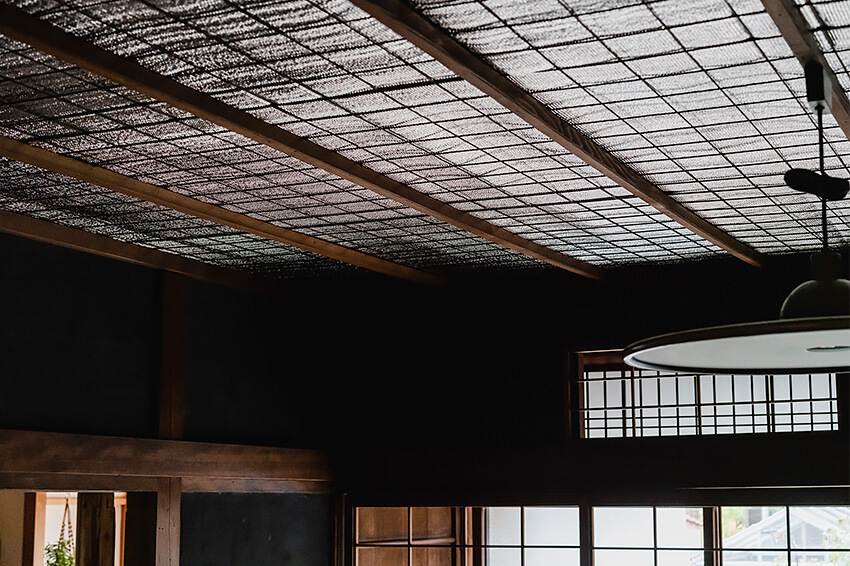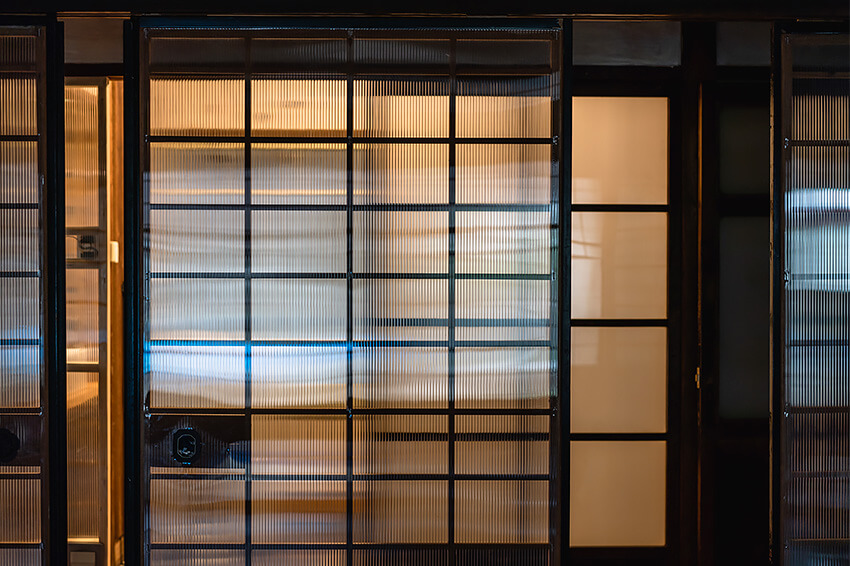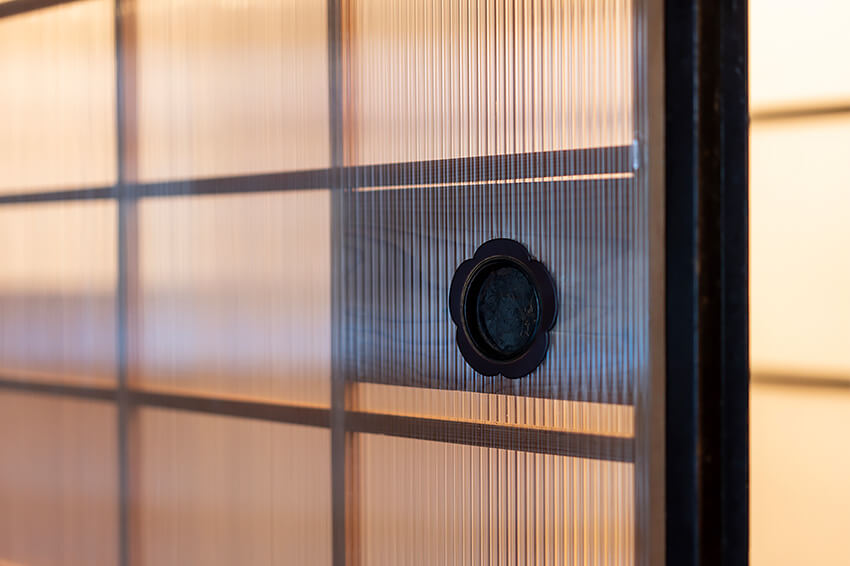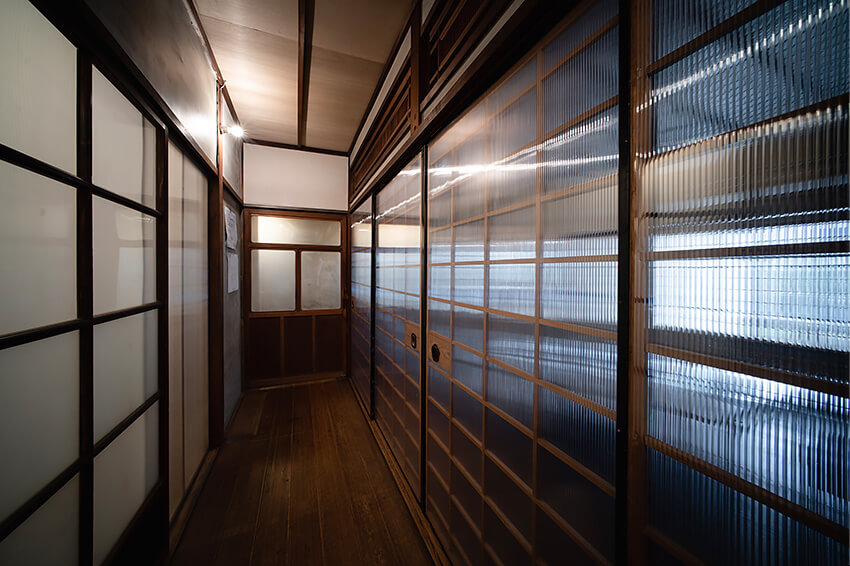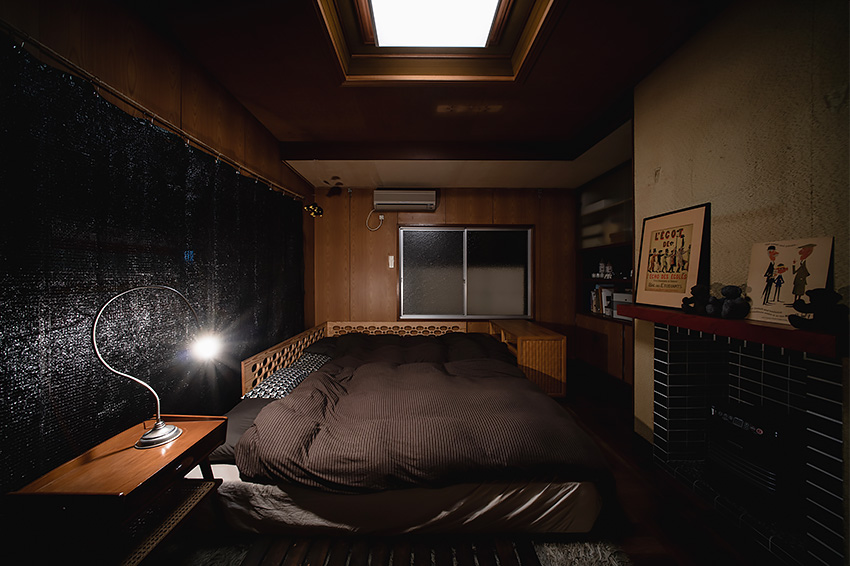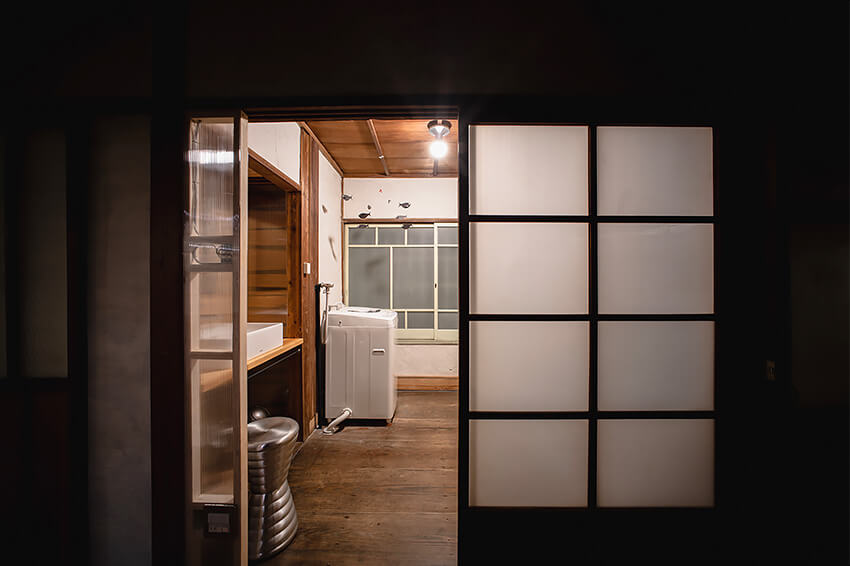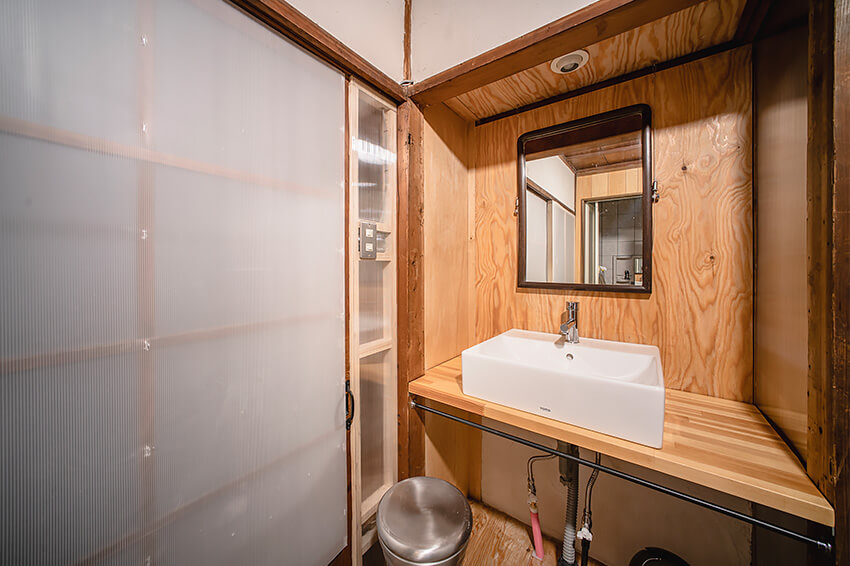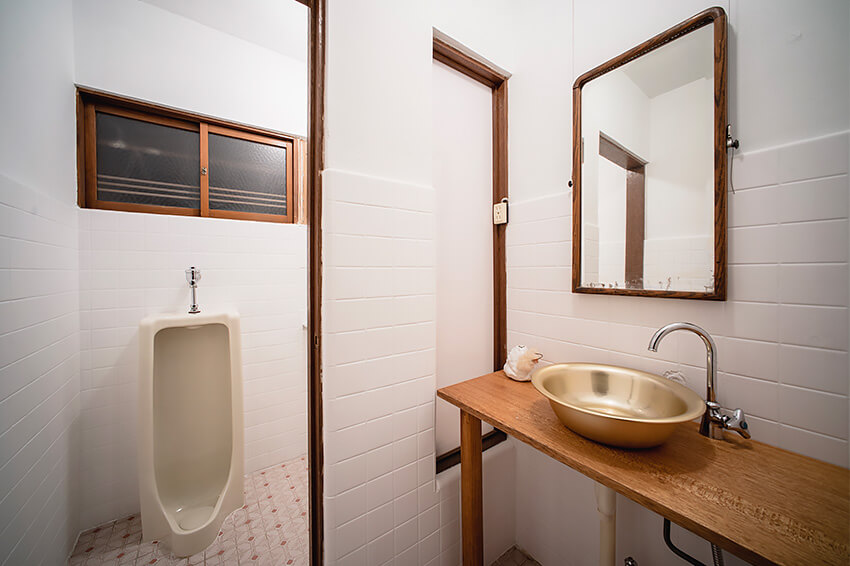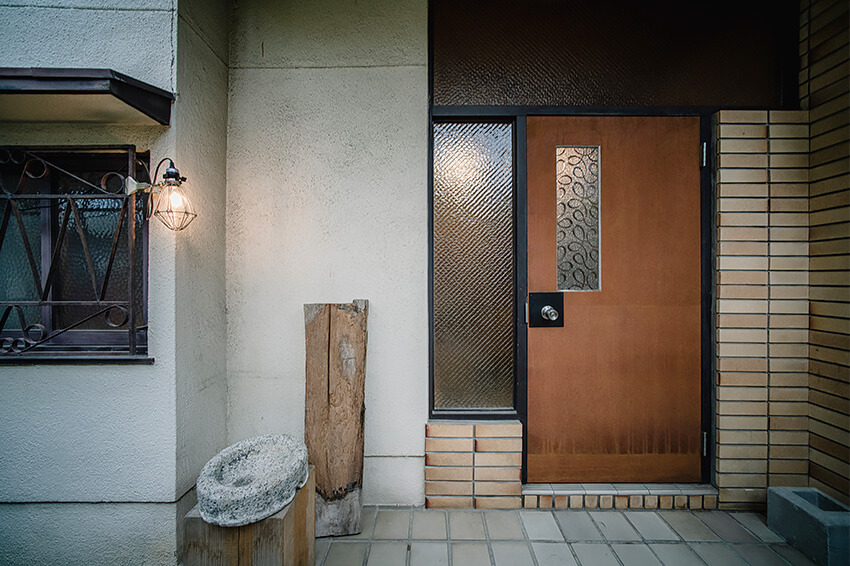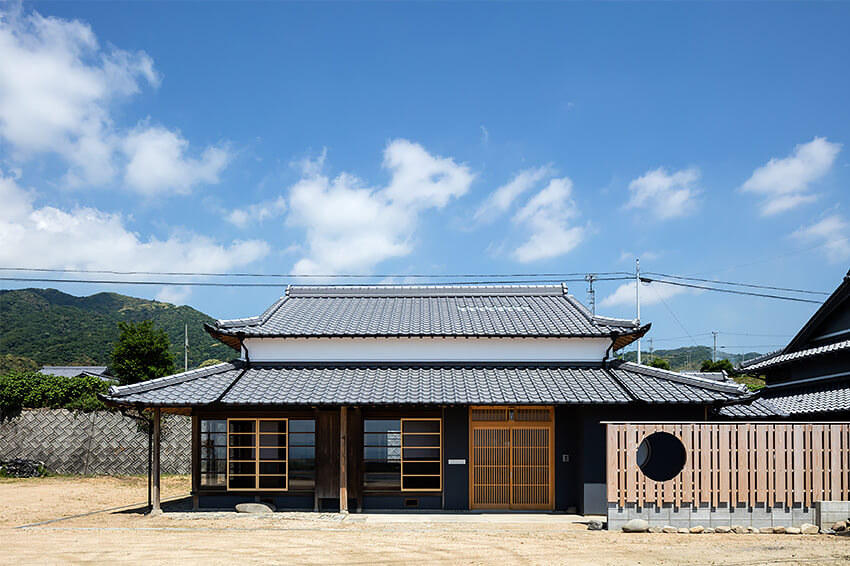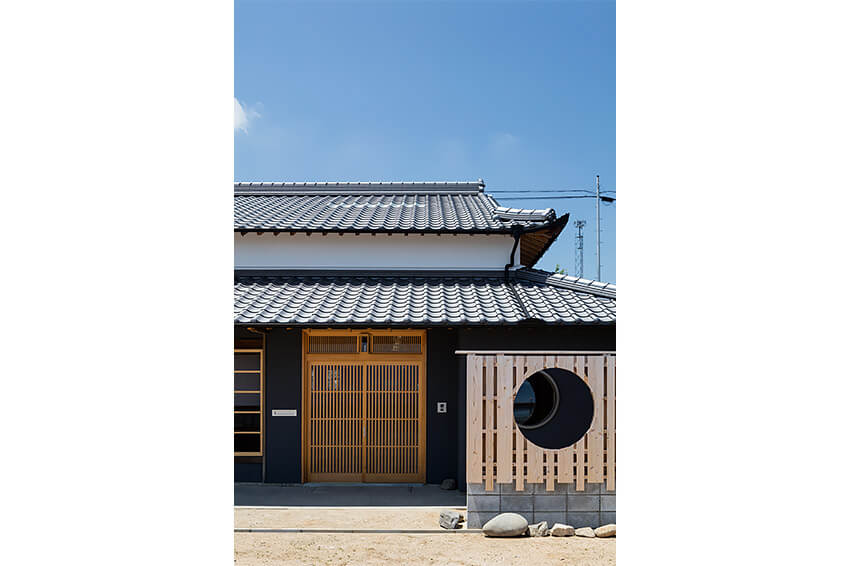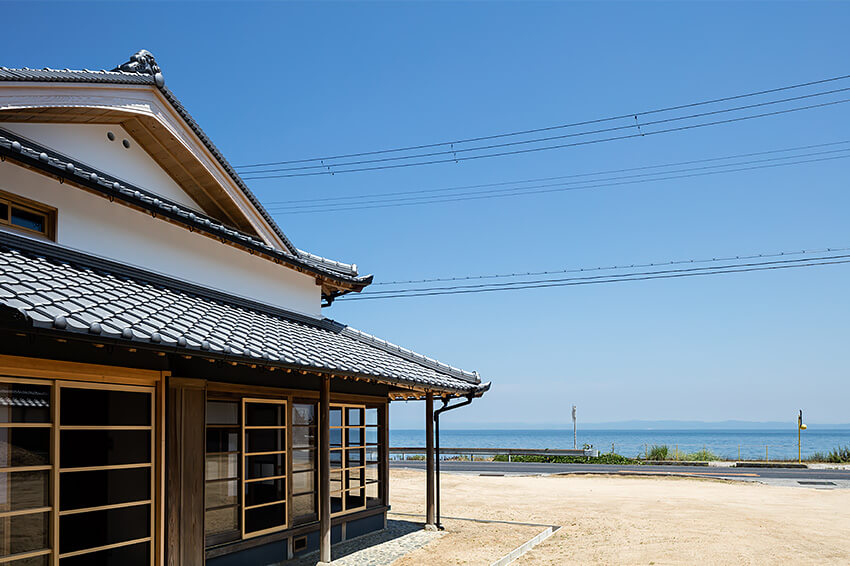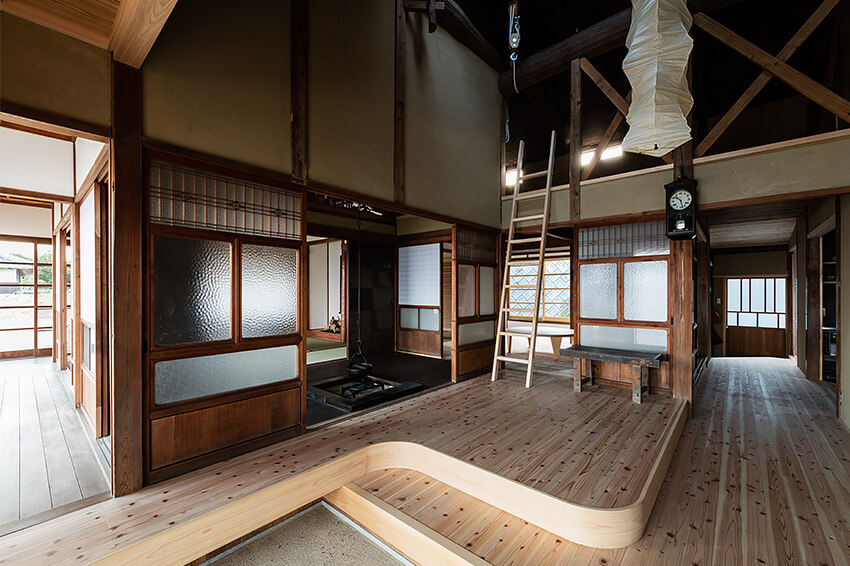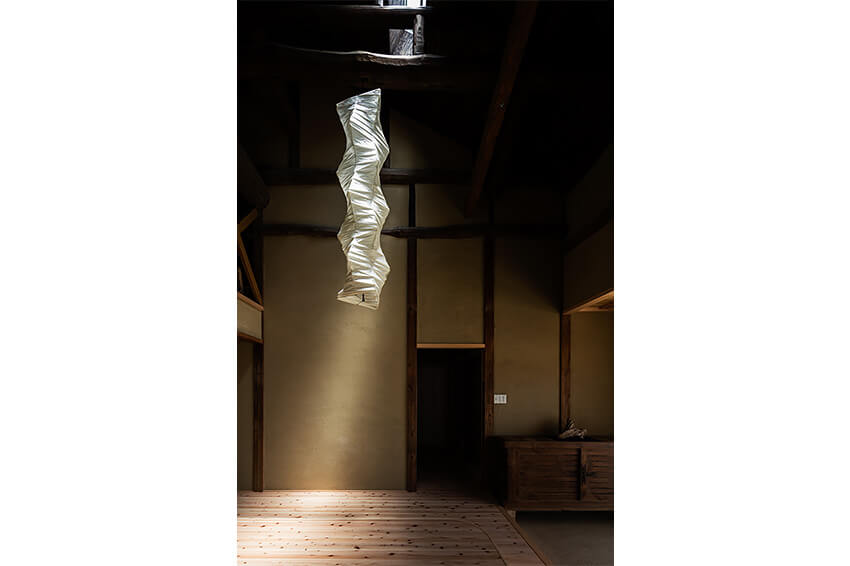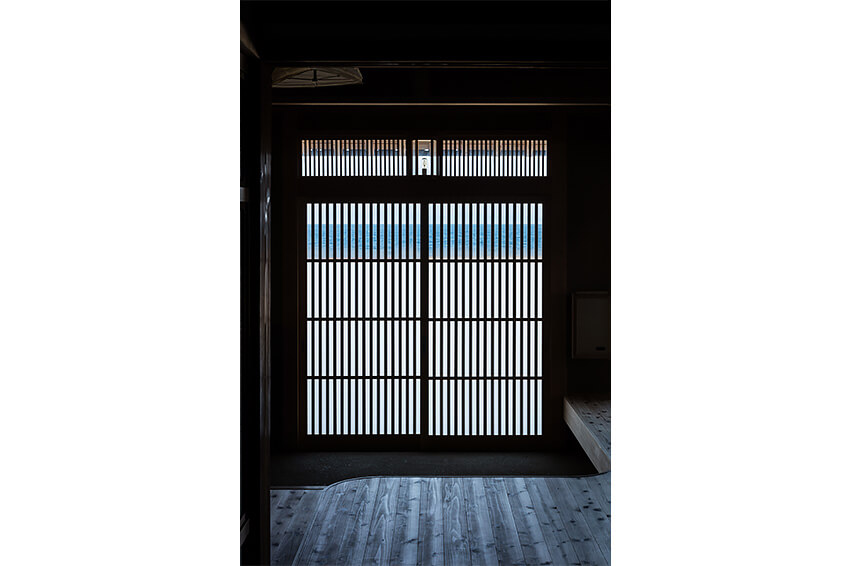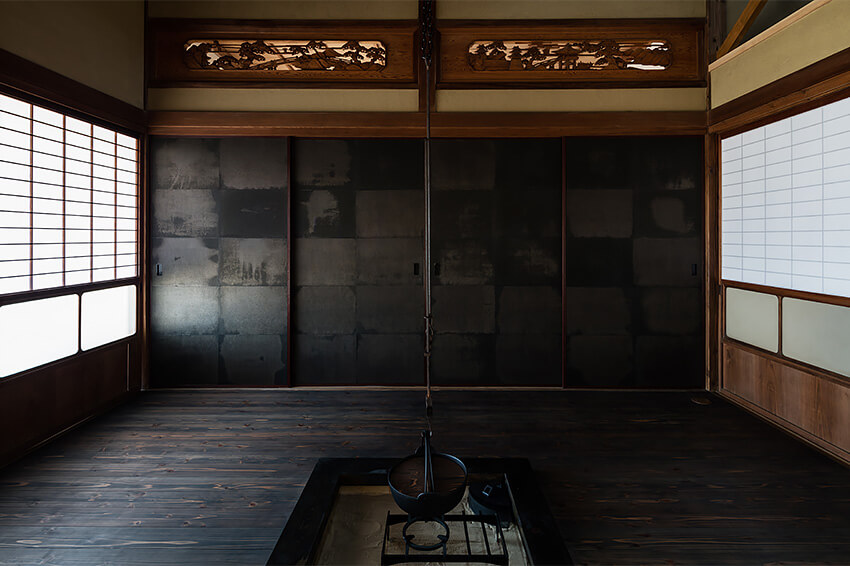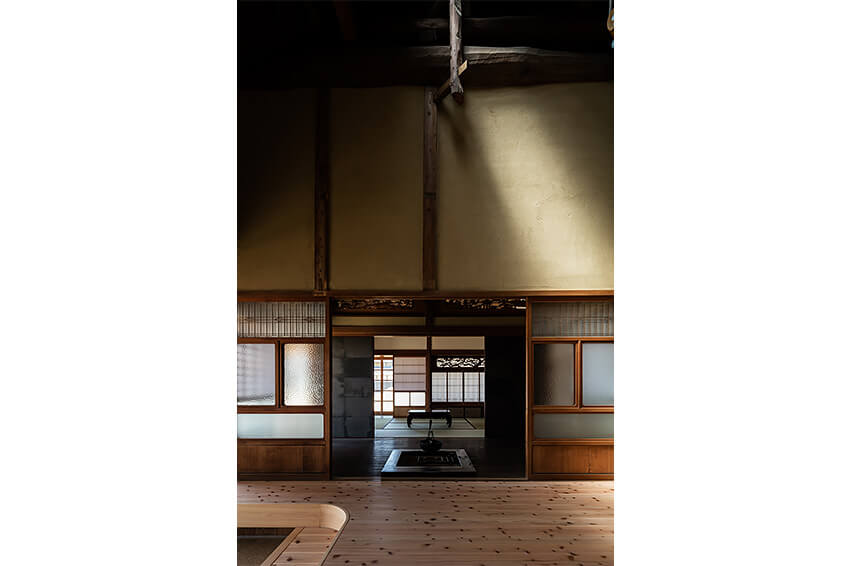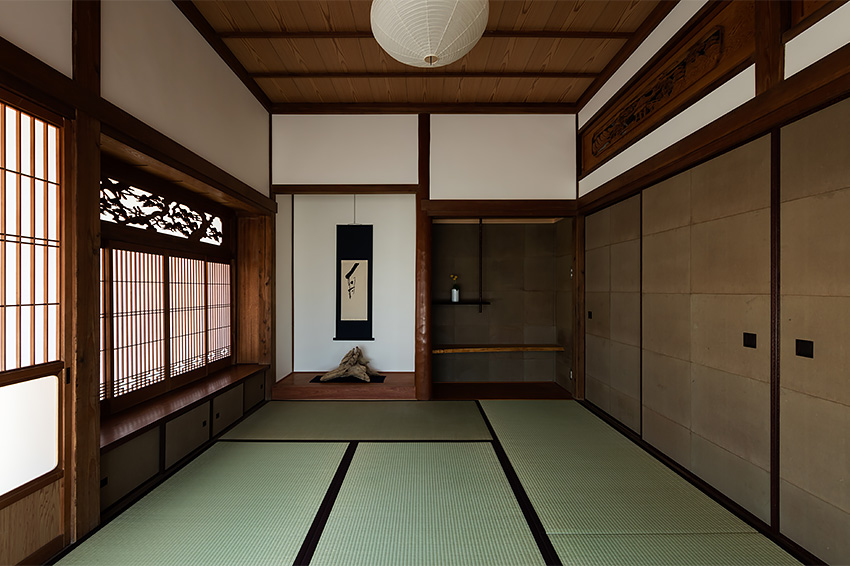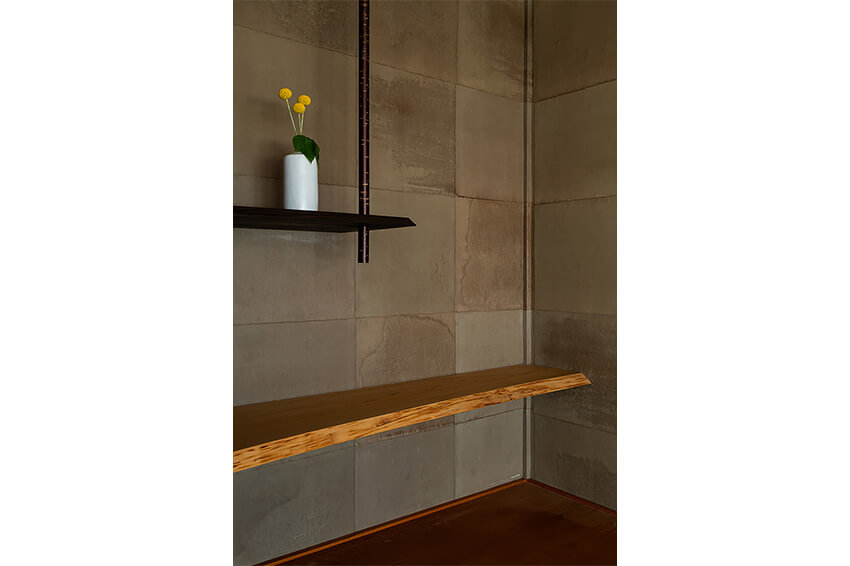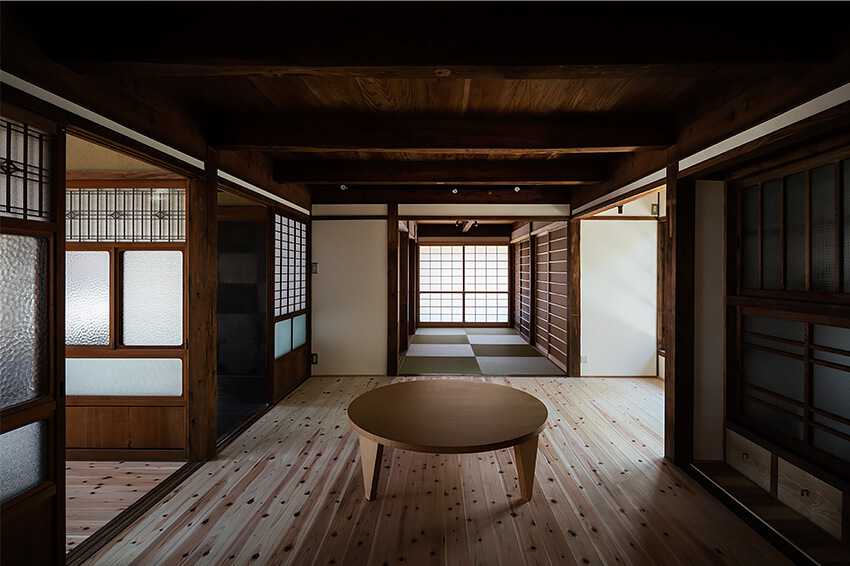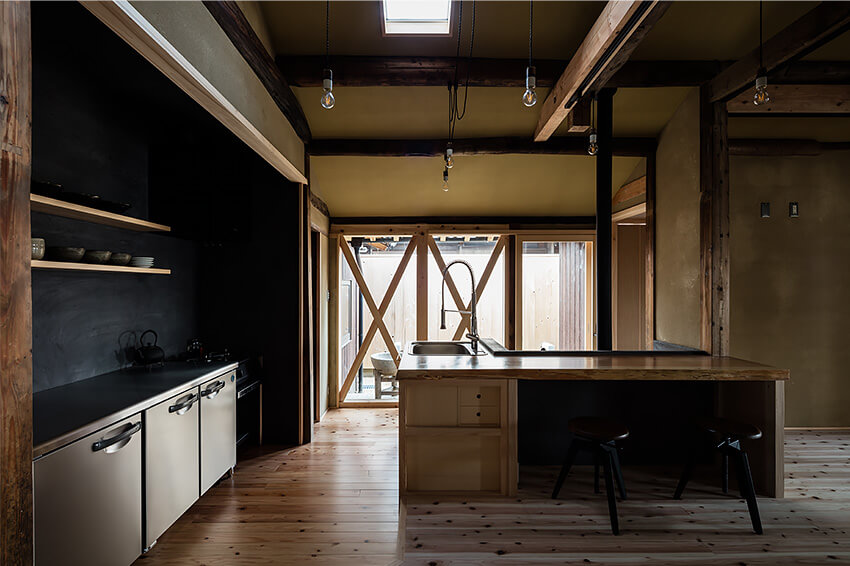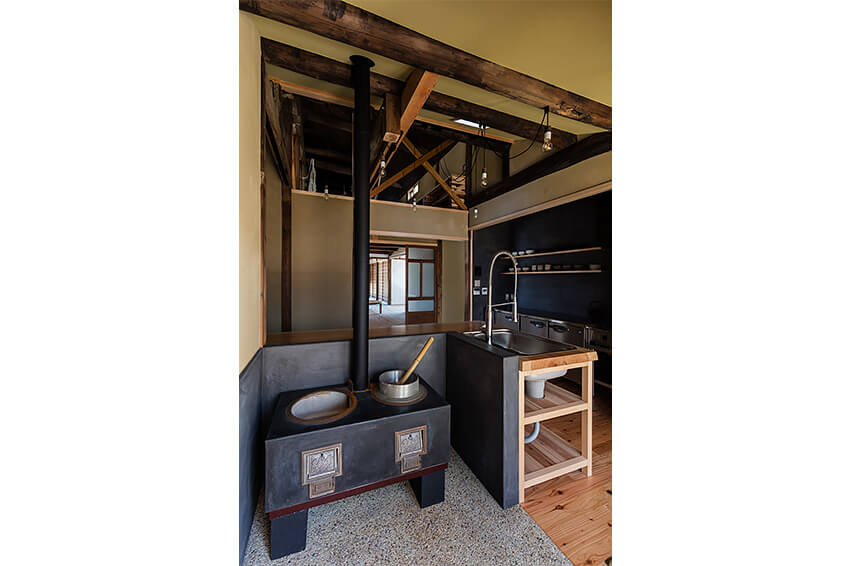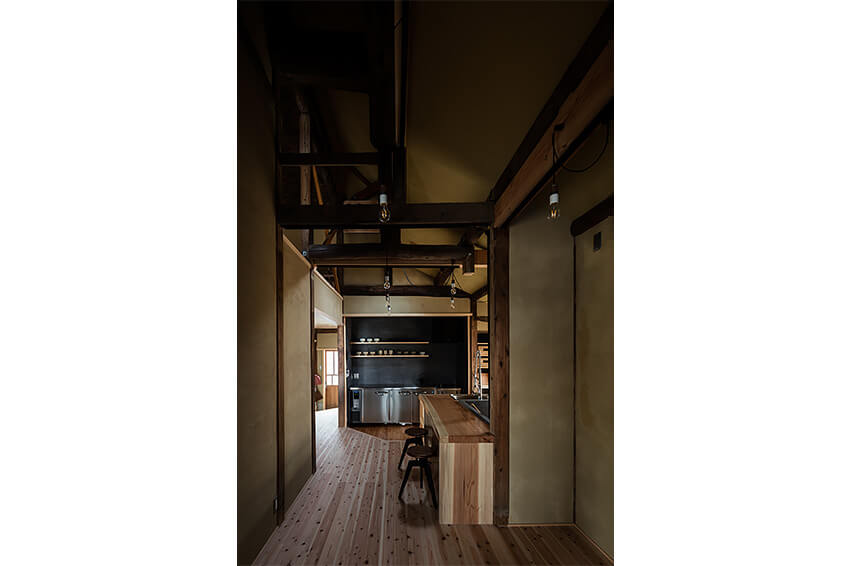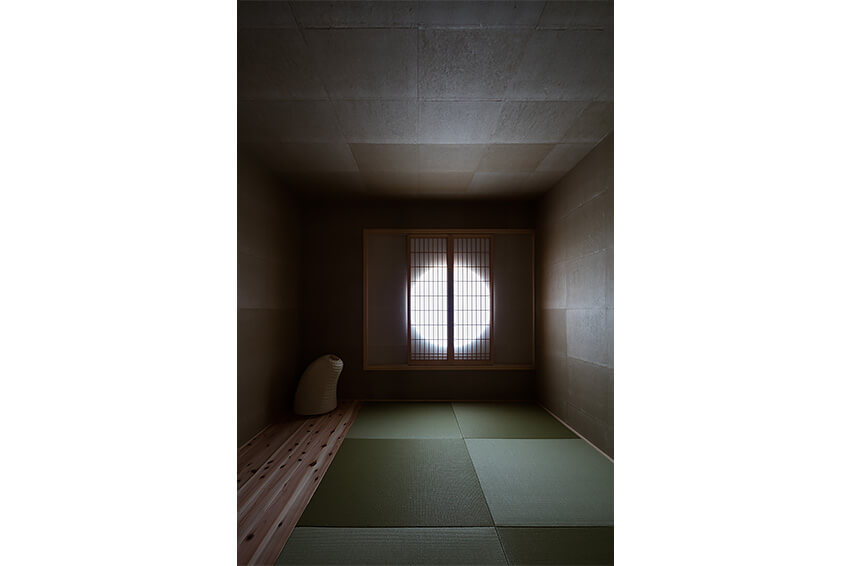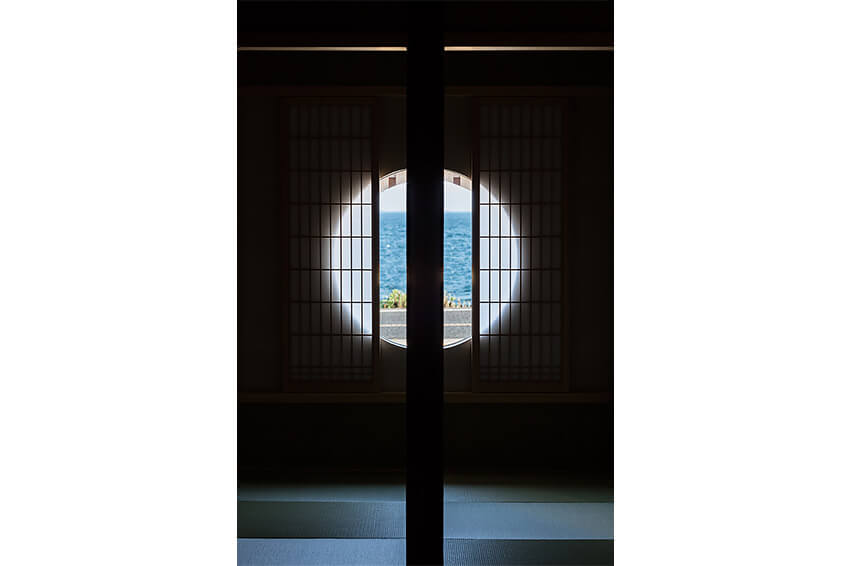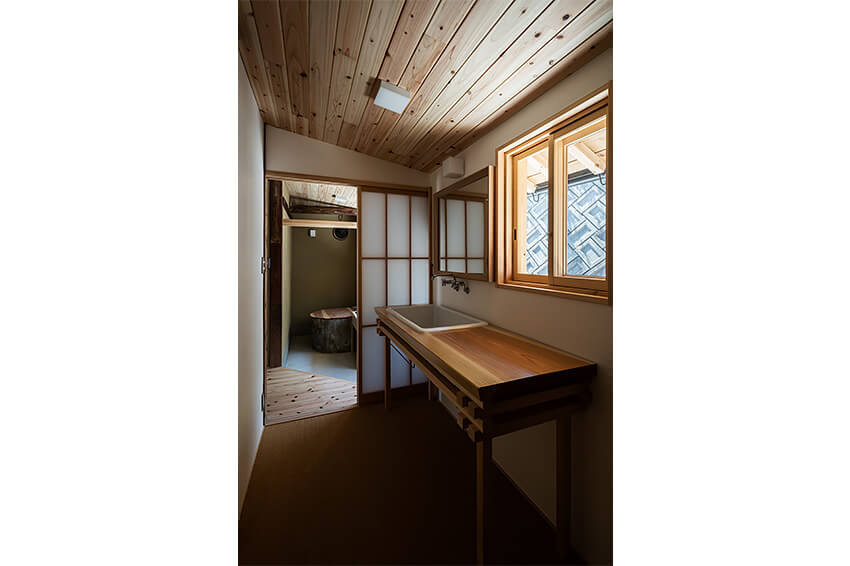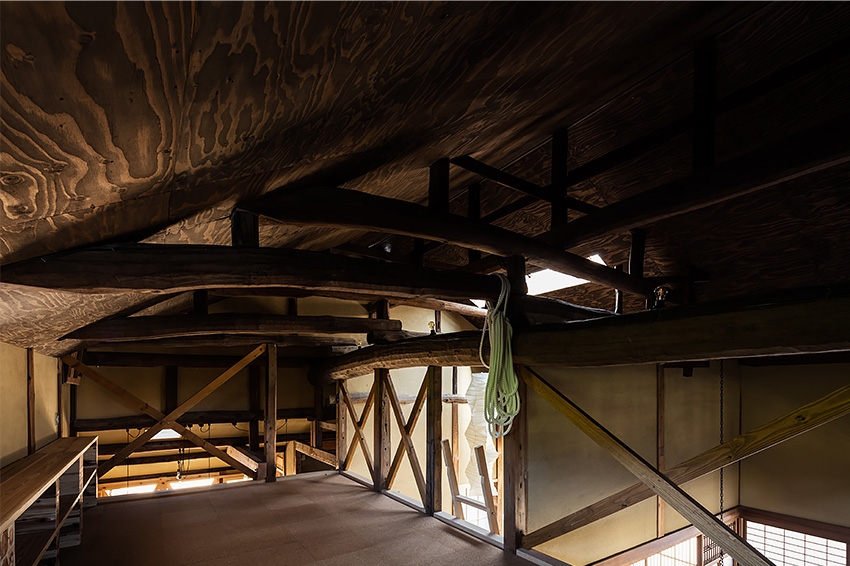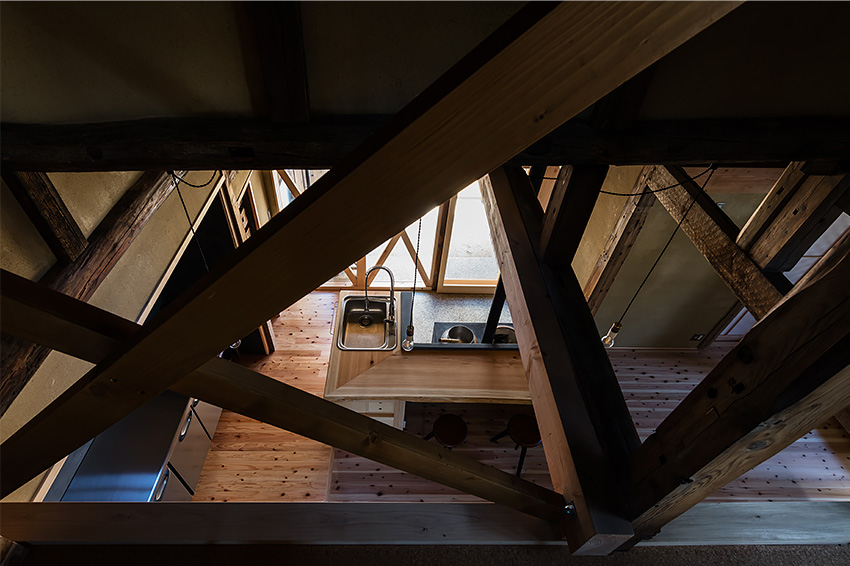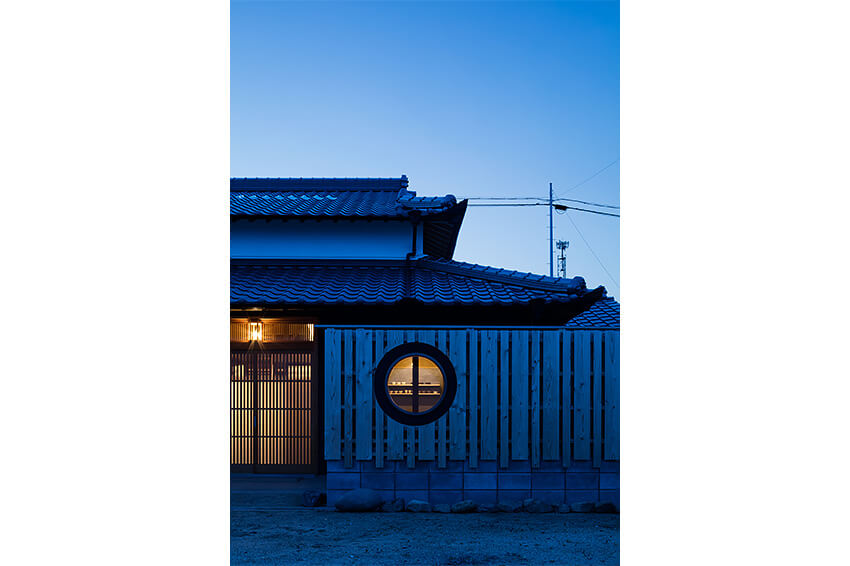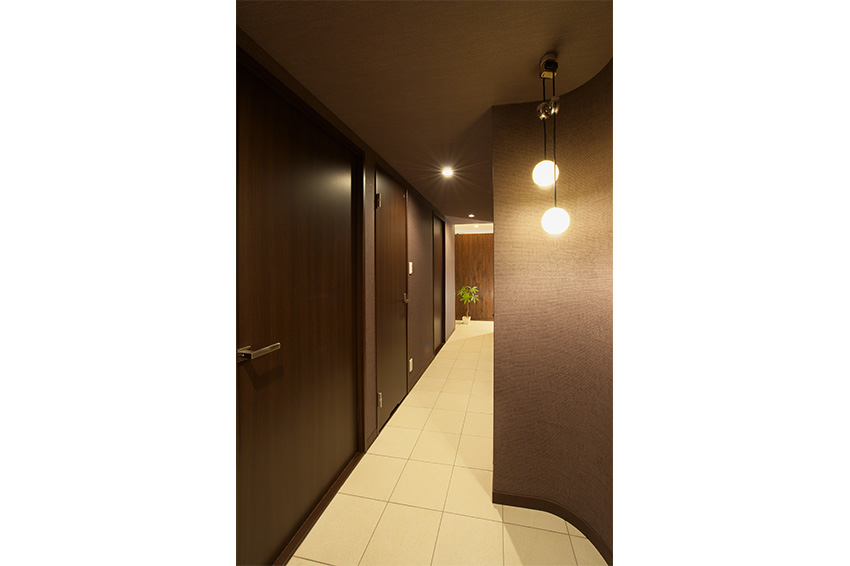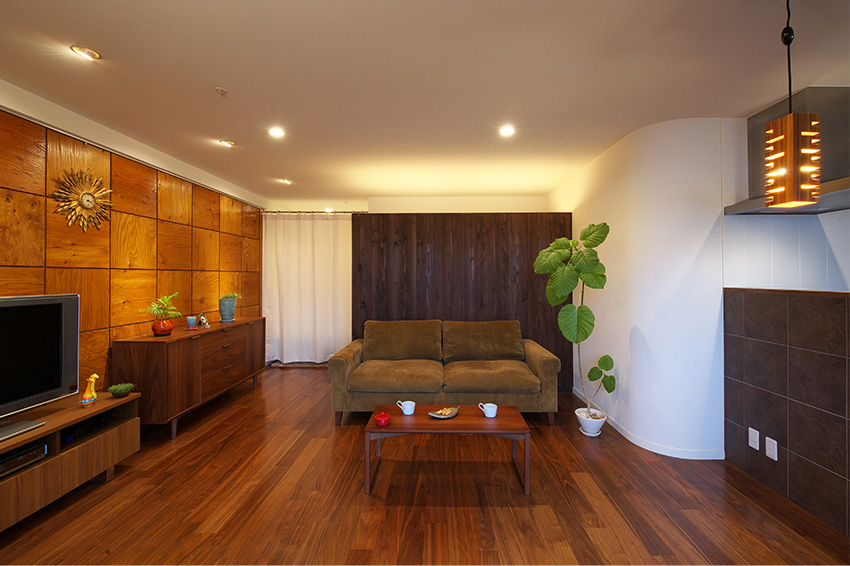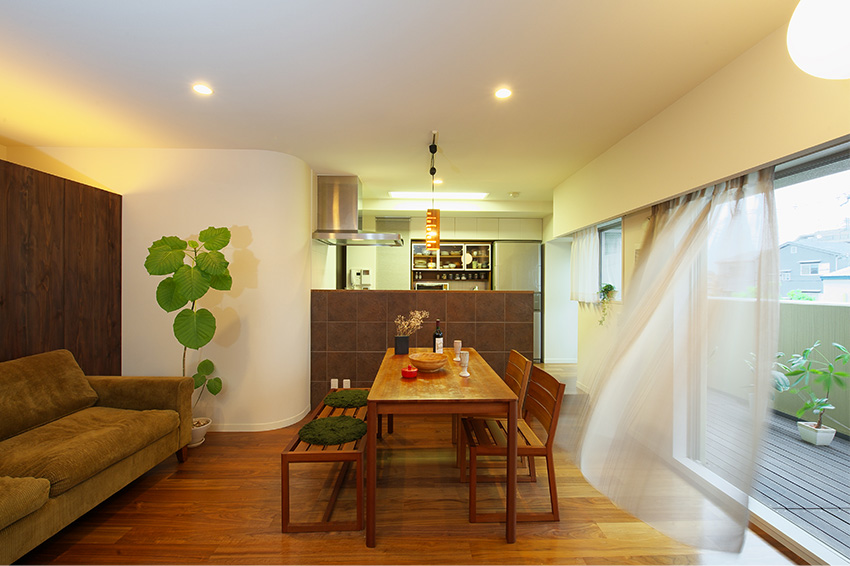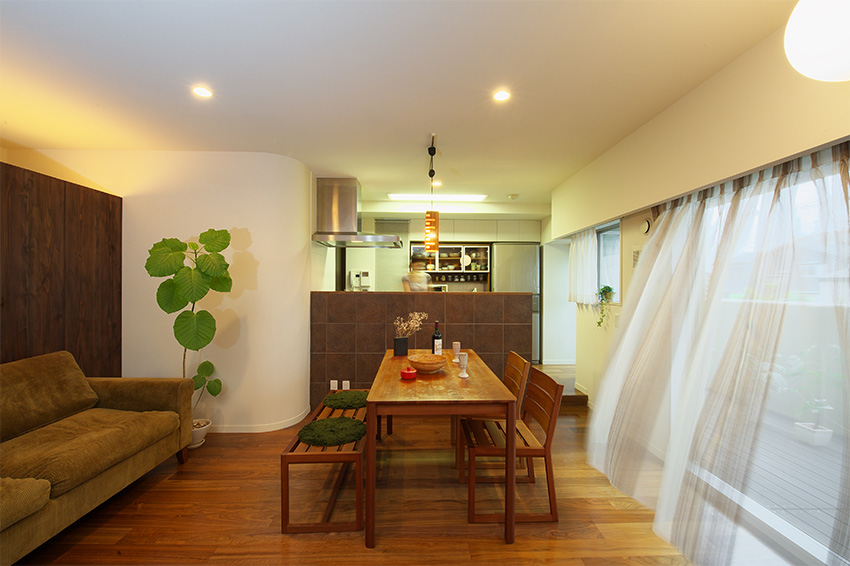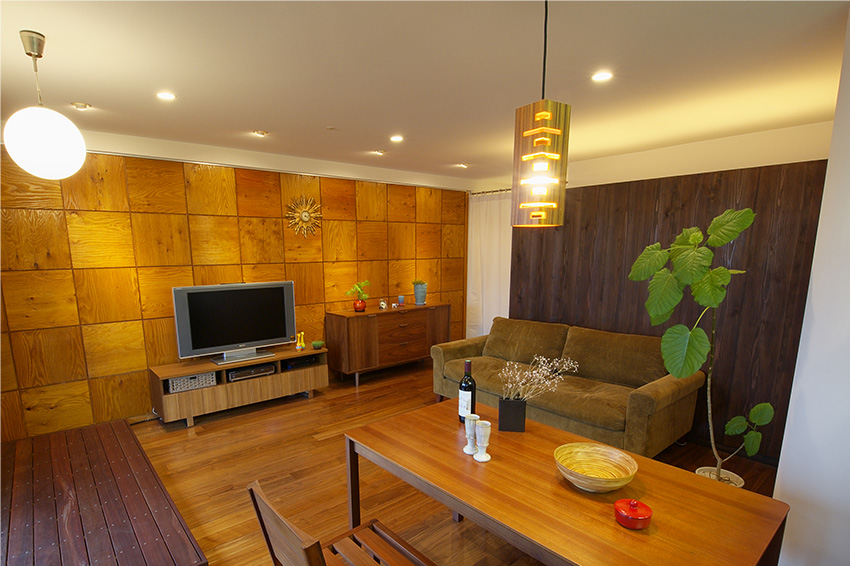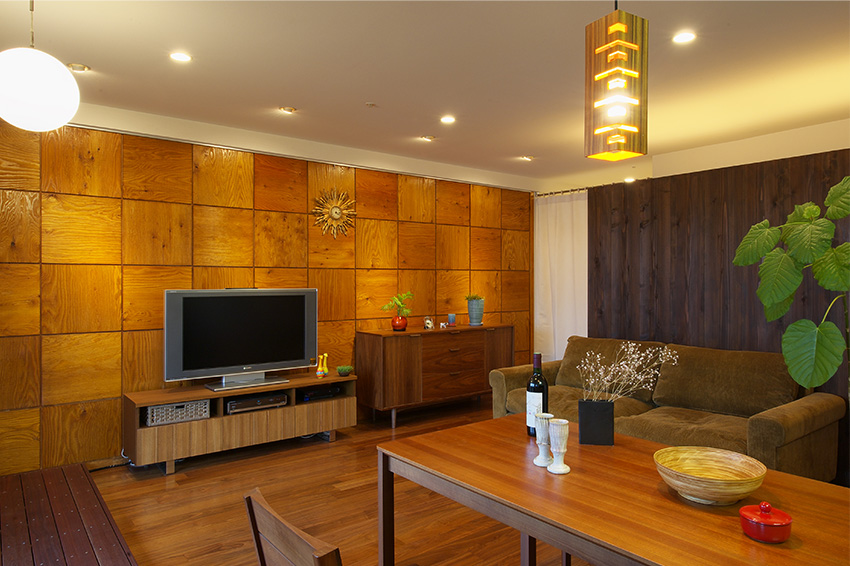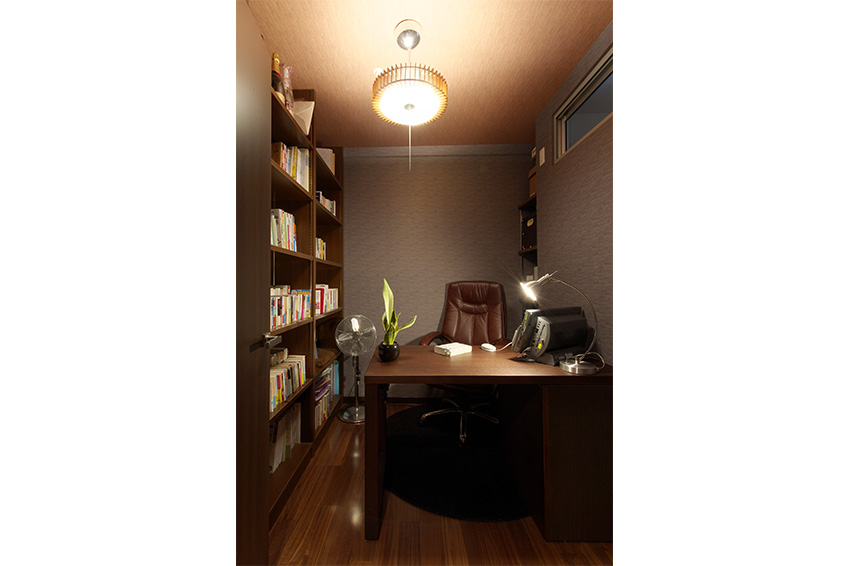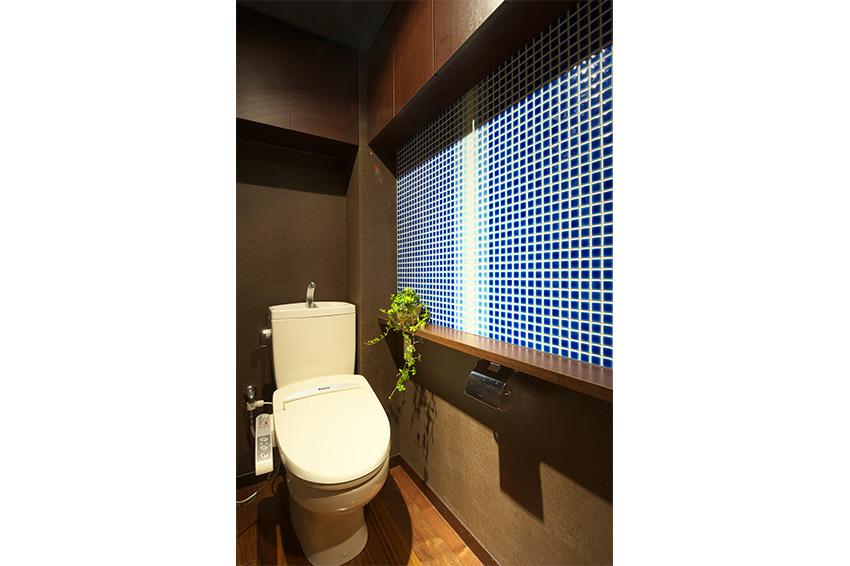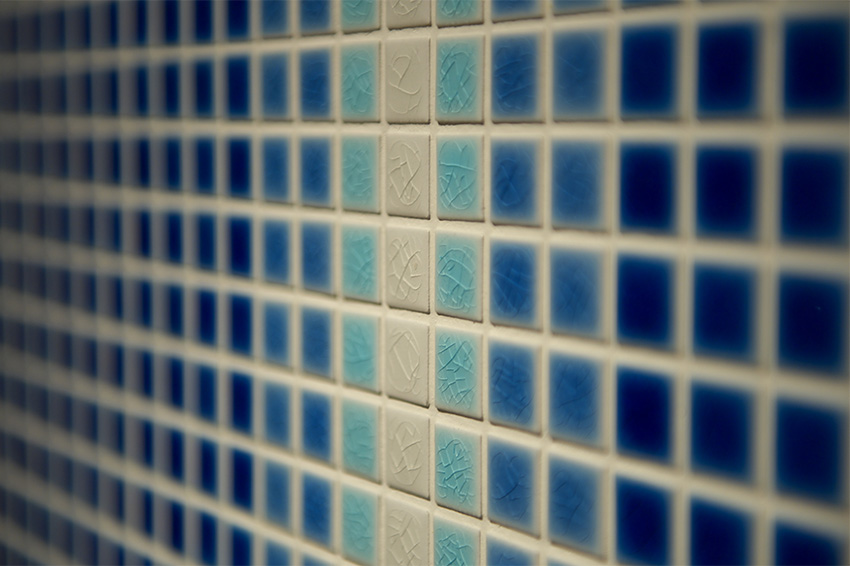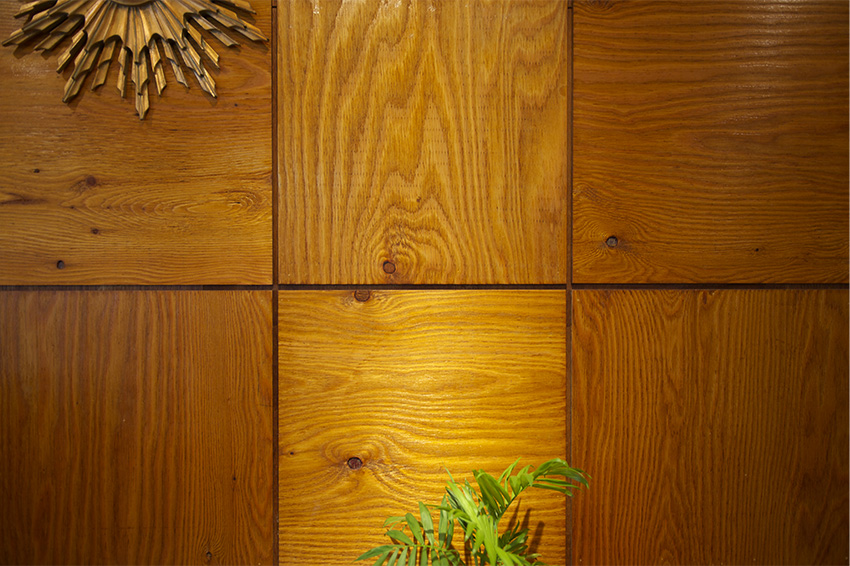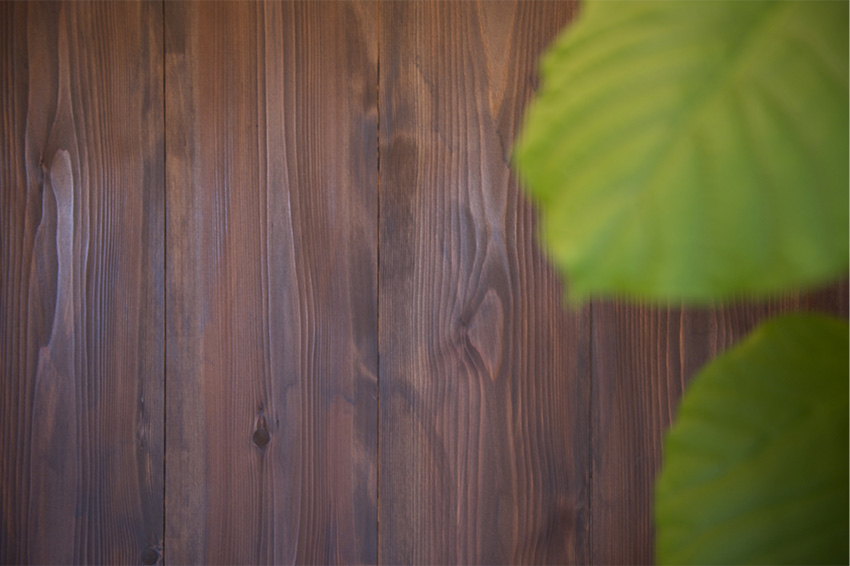淡路島の東、目の前に瀬戸内海が広がる土地に建つ、築130年の木造住宅の改修工事。
建主は「昔ながらの日本の住まいの良さを活かしつつ、現代の生活様式に沿うような計画」であること、「これまでの100年超の歴史を、100年後の未来も持続可能であること」を求めた。
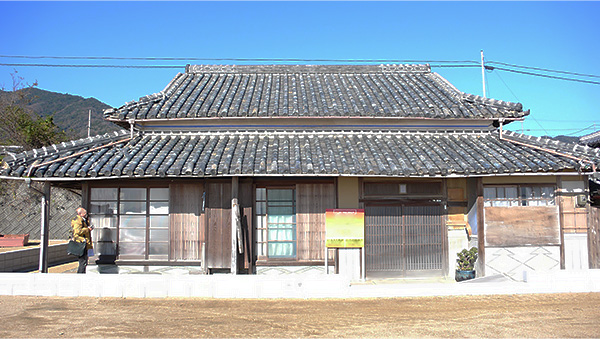
改修前。築130年の木造住宅。
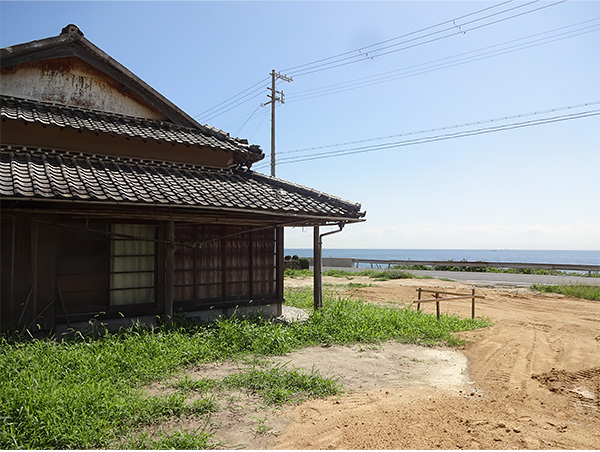
改修前。目の前に瀬戸内海が広がる。
古いものの価値を見出しながら新たなデザインを挿入することによって、1つの空間の中で新旧の意匠がお互いを引き立て合いながら共存し、時を経て調和していくことを目指して設計した。
日本の住宅といえば、元来その土地の木と土と紙で出来ており、それが何百年も建ち続ける事が出来る理由であるとの考えから、瓦、杉や桧、土、砂などの材料は出来る限り島内で調達し、主要な工種(屋根、大工、左官、建具など)については地元の職人による施工とした。
瓦は総葺替えとし、躯体は専門家による調査の上、充分な補強を施した。
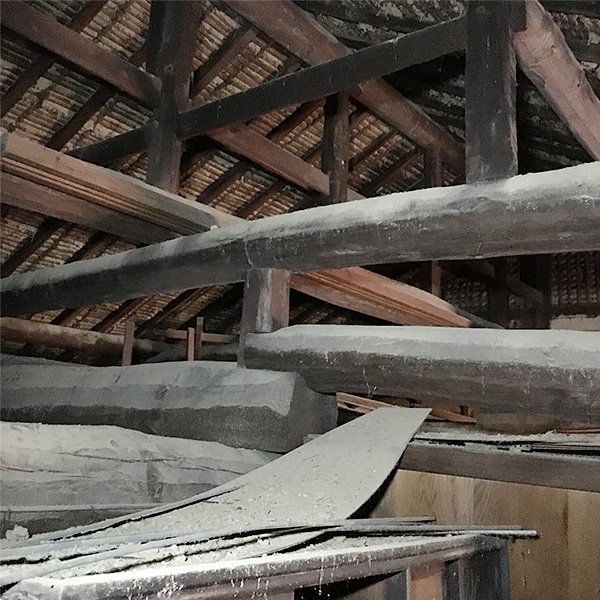
改修前。丸太による小屋組。
過去の無理な増築・改修によって、特に水廻りの劣化が進んでいた北側部分については、一旦減築した後、本体に準じる構造で再度増築し、現代の暮らしに沿うよう新たに設備をインサートした。
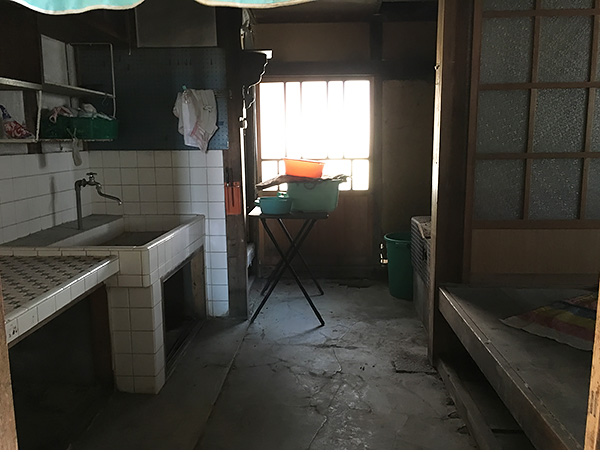
劣化が進んでいた北側部分。台所は土間。
対して、居室が集まる南側部分については、創建当時の手仕事が保存されており、表層替え(漆喰、和紙、畳)の上、美装に留めた。
外装仕上げは、漆喰、杉板貼、など。内装仕上げは、土壁、漆喰、和紙貼、杉板、桧板、三和土、洗出し、など。
この地域は島の中でも最も気候が安定しており、人工のエアコンディションは採用していない。
夏は建具(ガラス、障子、襖)の開け閉めによって風の通りを調節し、冬は炭と薪で暖を取ることで、年間を通して快適に過ごすことが可能である。
水はこれまで同様、井戸水を利用し、ごはんはかまどで炊く。
地の利、自然環境、エコ燃料などを最大限に利用することで、人にも地球にも負荷を掛けない暮らしが実践できる。
無垢の木や土、瓦屋根の家は、日々の気遣いさえあれば永く美しく保つことができ、劣化ではなく味わいを増していく。
100年を越えて残されてきた価値を尊重し、未来を見据えて再構築するように行った今回の「修理」によって、「持続可能な暮らし方」の一案を提示した。
"Repair of Y Residence"
(Housing renovation made in Awaji Island)
The Y residence is built on the land where the Seto Inland Sea extends to the east of Awajishima ‒ the project is a renovation work on 130 year old wooden houses.
The owner/client requested that the design incorporate two concepts, firstly "an idea that adheres to modern lifestyles, while making good use of old-fashioned Japanese homes", and secondly that "history dating from 100 years ago can be sustainable 100 years into the future.“
We insert a new design, while rediscovering the value of the old one. The aim is the new and old designs coexist in a space, and harmonize over time.
Speaking of Japanese houses, they are originally made of tree, soil and paper, and recalling the idea to keep the building for hundreds of years ‒ it is important to consider that tiles, cedar, cypress, soil, sand materials were procured as much as possible from the island, and the main engineering aspects (roofs, carpenters, plasterers, joinery, etc) were constructed by local artisans.
The roof tiles were completely roughened and the frame was subjected to adequate reinforcement after examination by experts.
As for the northern part of the house where degradation around water has progressed particularly due to excessive expansion and refurbishment in the past, it is rebuilt again with a structure similar to the main body, and a new facility is inserted along the living of the present day .
On the other hand, handwork at the time of construction was preserved for the southern part where living rooms gather, and kept on beautiful wear on top of the surface change (plaster, Japanese paper, tatami).
The climate of this area is the most stable in the island and artificial air conditioning is not adopted.
It is possible to exist comfortably throughout the year. In the summer, by adjusting the wind streets to open and close fittings (glass, sliding doors) and warming with charcoal and firewood in winter.
It is possible to live without overexerting the resources of the population and the planet by utilizing the benefits of the earth, natural environment, eco fuel, etc.
The Y residence of solid wood, earth and tiled roof can be kept beautiful for a long time only if there is daily maintenance, to the aesthetic rather allowing deterioration.
This respects the legacy from over 100 years ago and presents the idea of "sustainable way of life" by "repair" of this era, in order to reconstruct the concept with a view to the future.
